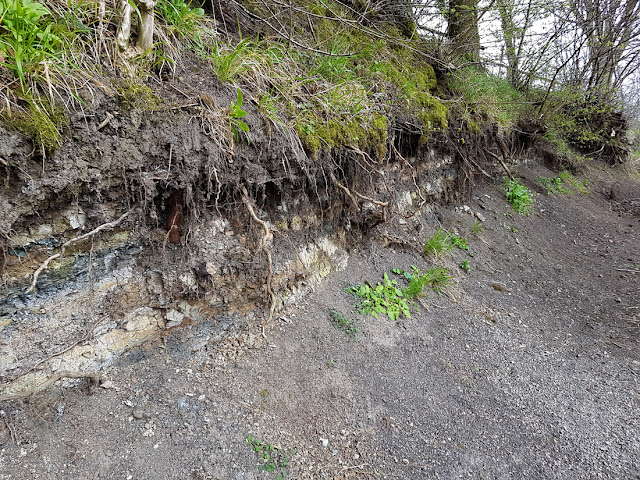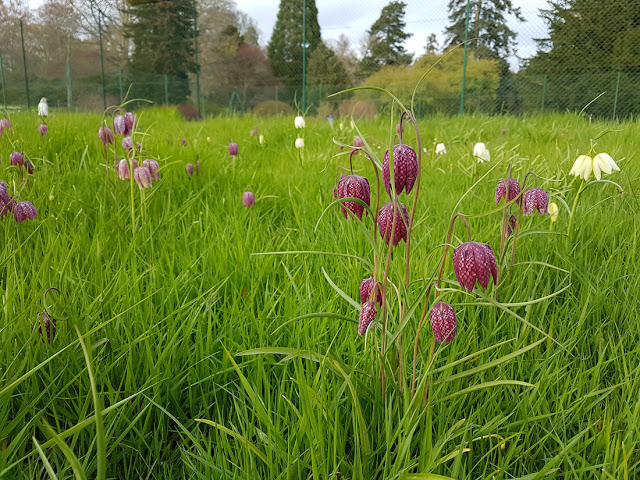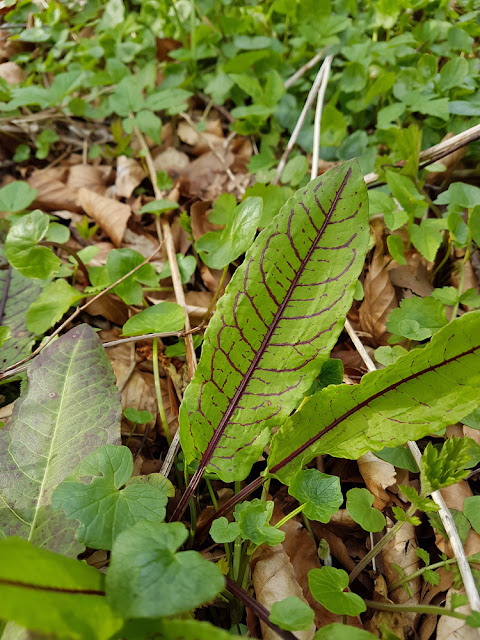 |
| Ellingham - The route is marked in red and began in the village, working roughly clockwise. |
On Sunday morning, a good turn out of 17 members of AWG came for a wander around the local patch of Michael Hall, a resident of Ellingham. The name of the village may confuse some, as there is an Edlingham, an Eglingham and an Ellingham all in the Alnwick area, not including Ellington 20 miles to the south just to make matters even worse! So, please forgive me if I've got it wrong on here, at least we all turned out at the same place.
We met at 10am in the centre of the village, a very picturesque setting, to be guided by Michael around the lanes and tracks he usually walks with his dogs. The route was generally on the level and took about a couple of hours, including stops and chats.
Although it was bright, the cold breeze curtailed the arrival of many spring migrants, the only ones noted being 1 House Martin, 3 Swallows, 1 Blackcap and many Chiffchaffs. We also noted displaying Lapwings, Buzzard, Song Thrushes, Yellowhammers and singing Skylarks amongst others.
 |
| Skylark. Image taken on another day... |
A lame Roe buck made a sorry sight as it hobbled away across a field towards the Priestdean Burn.
The whole area looks nice for wild flowers and, on a warmer day, invertebrates such as Butterflies, Bees and Moths would be worth a look.
 |
| Moschatel ( top) and Wood Anemone brightened the walk as did the first Bluebells just opening. |
My personal favourite spot was the area around St Maurice's Church. There was a nice spring well uprising nearby that held Bogbean, Hemlock Water-Dropwort, Lords and Ladies, Butterbur and Marsh Marigold, while the churchyard has had Hawfinch, today a lone Nuthatch was the highlight.
 |
| The upwelling spring. |
 |
| St Maurice's Church. |
On the walls here, a few Harts Tongue Ferns were given the once over by Alan Fairclough, looking for signs of breeding micro moth species. He struck gold with a first for Northumberland -
Psychoides verhuella, a tiny moth with a purplish sheen, who's larva were living in the fern spores.
 |
| The furry looking blob in the centre is the larva disturbing the usual tram lines of spores. |
To see the moth and the actual larvae please click
HERE.
We all returned back to our cars very pleased at the chance to explore such a lovely little village.
If any members has other ideas or fancies leading a walk please let us know...















